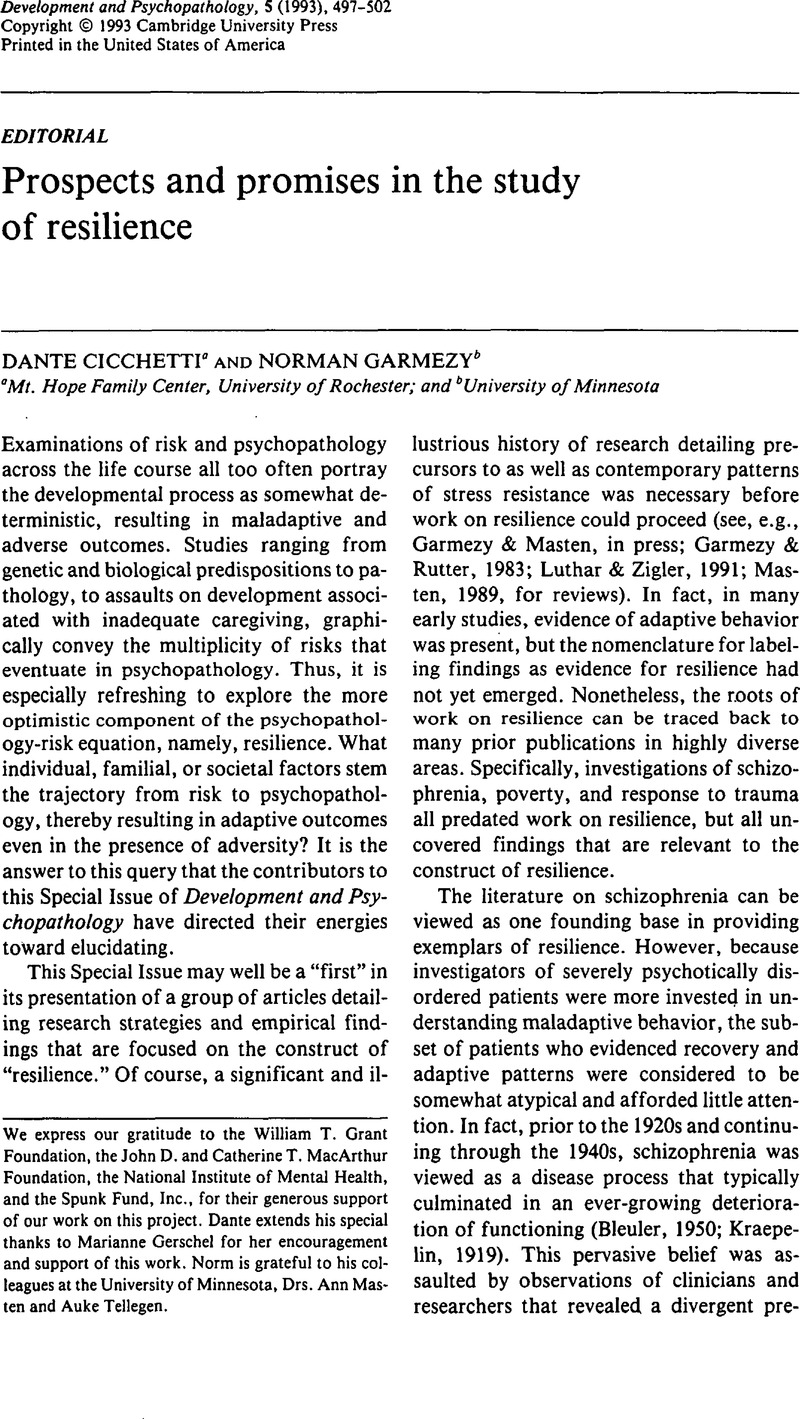Crossref Citations
This article has been cited by the following publications. This list is generated based on data provided by Crossref.
Beeghly, Marjorie
and
Cicchetti, Dante
1994.
Child maltreatment, attachment, and the self system: Emergence of an internal state lexicon in toddlers at high social risk.
Development and Psychopathology,
Vol. 6,
Issue. 1,
p.
5.
Cowen, Emory L.
1994.
The enhancement of psychological wellness: Challenges and opportunities.
American Journal of Community Psychology,
Vol. 22,
Issue. 2,
p.
149.
Cicchetti, Dante
and
Rogosch, Fred A.
1994.
The Toll of Child Maltreatment on the Developing Child: Insights from Developmental Psychopathology.
Child and Adolescent Psychiatric Clinics of North America,
Vol. 3,
Issue. 4,
p.
759.
Zimmerman, Marc A.
and
Arunkumar, Revathy
1994.
Resiliency Research: Implications for Schools and Policy.
Social Policy Report,
Vol. 8,
Issue. 4,
p.
1.
Cicchetti, Dante
and
Tucker, Don
1994.
Development and self-regulatory structures of the mind.
Development and Psychopathology,
Vol. 6,
Issue. 4,
p.
533.
Hoyt-Meyers, Lynne
Cowen, Emory L.
Work, William C.
Wyman, Peter A.
Magnus, Keith
Fagen, Douglas B.
and
Lotyczewski, Bohdan S.
1995.
Test correlates of resilient outcomes among highly stressed second- and third-grade urban children.
Journal of Community Psychology,
Vol. 23,
Issue. 4,
p.
326.
CICCHETTI, DANTE
and
TOTH, SHEREE L.
1995.
A Developmental Psychopathology Perspective on Child Abuse and Neglect.
Journal of the American Academy of Child & Adolescent Psychiatry,
Vol. 34,
Issue. 5,
p.
541.
Cicchetti, Dante
Toth, Sheree L.
and
Lynch, Michael
1995.
Advances in Clinical Child Psychology.
p.
1.
Dyer, Janyce G.
and
McGuinness, Teena Minton
1996.
Resilience: Analysis of the concept.
Archives of Psychiatric Nursing,
Vol. 10,
Issue. 5,
p.
276.
Gordon, Kimberly A.
and
Coscarelli, William C.
1996.
Recognizing and fostering resilience.
Performance + Instruction,
Vol. 35,
Issue. 9,
p.
14.
Gilgun, Jane F.
1996.
Human Development and Adversity in Ecological Perspective, Part 1: A Conceptual Framework.
Families in Society: The Journal of Contemporary Social Services,
Vol. 77,
Issue. 7,
p.
395.
Staudinger, U. M.
and
Fleeson, W.
1996.
Self and personality in old and very old age: A sample case of resilience?.
Development and Psychopathology,
Vol. 8,
Issue. 4,
p.
867.
Brand, Stephen
and
Felner, Robert D.
1996.
Perceived ecological congruence across family/school environments: Impact on the consistency of behavioral patterns and adaptation among children and youth.
Journal of Community Psychology,
Vol. 24,
Issue. 2,
p.
160.
Raver, C. Cybele
1996.
Success at Catching and Keeping Toddler's Attention: An Examination of Joint Attention Among Low-Income Mothers and Their 2-Year-Olds.
Early Development and Parenting,
Vol. 5,
Issue. 4,
p.
225.
1996.
Commentaries.
Journal of the American Psychoanalytic Association,
Vol. 44,
Issue. 2,
p.
392.
Bender, Doris
and
Lösel, Friedrich
1997.
Protective and risk effects of peer relations and social support on antisocial behaviour in adolescents from multi-problem milieus.
Journal of Adolescence,
Vol. 20,
Issue. 6,
p.
661.
Kilmer, Ryan P.
Cowen, Emory L.
Wyman, Peter A.
Work, William C.
and
Magnus, Keith B.
1998.
Differences in stressors experienced by urban African American, White, and Hispanic children.
Journal of Community Psychology,
Vol. 26,
Issue. 5,
p.
415.
Brandt, Patricia
and
Weinert, Clarann
1998.
Children's Mental Health in Families Experiencing Multiple Sclerosis.
Journal of Family Nursing,
Vol. 4,
Issue. 1,
p.
41.
Teglasi, Hedwig
and
Epstein, Seymour
1998.
Temperament and Personality Theory: The Perspective of Cognitive-Experiential Self-Theory.
School Psychology Review,
Vol. 27,
Issue. 4,
p.
534.
Freitas, Antonio L.
and
Downey, Geraldine
1998.
Resilience: A Dynamic Perspective.
International Journal of Behavioral Development,
Vol. 22,
Issue. 2,
p.
263.





